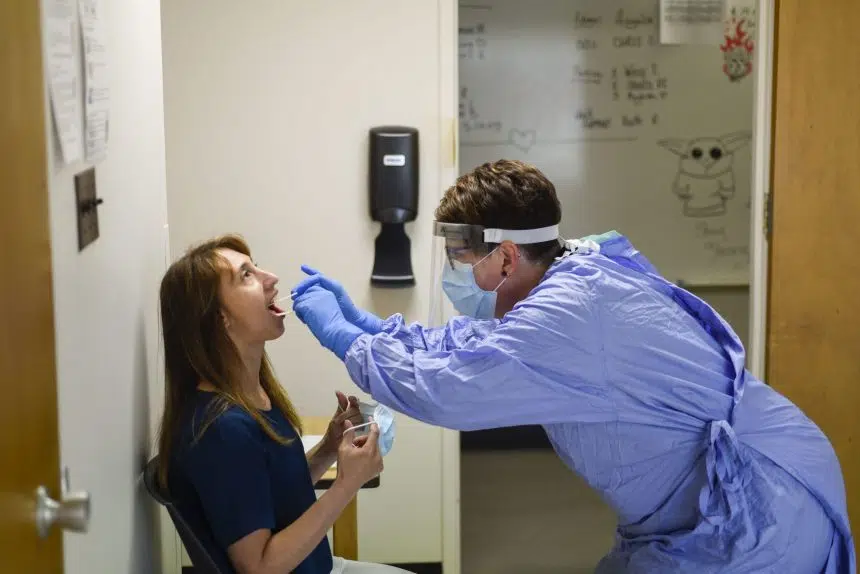The Saskatchewan Health Authority’s most recent physician town hall on Thursday laid bare the impact that the Delta variant is having on the province.
According to the slides, the Delta variant has become the dominant strain in the province and case counts have increased fourfold in one month.
On July 21, the seven-day rolling average of new daily cases was 31. As of Aug. 26, that number was up to 172.
Many of those cases are affecting young adults. In the last week, confirmed cases among those 18 to 29 spiked, making up 28 per cent of cases in the last week. Test positivity is at 8.1 per cent.
Saskatchewan has the second-highest new case rate over the last seven days among provinces after Alberta, at 103 per 100,000 people as of Aug. 25.
At 526 cases per 100,000 people, the Far North has the highest case rates over the last seven days in the country.
Hospitalizations have risen by more than 30 per cent in one week, with ICU admission trending upward as well.
The average age of those in hospital is dropping, with 37 per cent of current COVID hospitalizations affecting people under 39 years old.
Wow. Tonight's Doctor's Town Hall. Yep, it's bad, #SK.
This 🧵 will highlight 3 of my #Saskatoon colleagues being blunt & honest.
SUMMARY: no public health measures + unideal vaccine uptake + no staffing capacity in hospitals = #SK hospitals/ICUs in big 💩.
1/ #COVID19SK
— Dr. Alexander Wong (@awong37) August 27, 2021
According to Dr. John Froh, deputy chief medical officer, ICU demand is still in the green, meaning there are under 79 patients and that the system effectively meets demand.
However, he said that the situation is trending toward yellow, meaning the system is challenged with care impacted. At that level, there are 79-116 patients. The ratio of RNs to patients is altered, with the use of non-traditional ICU staff. There would be some service slowdown and some triage required.
“Public health workforce cannot keep up with the volume of contact tracing, isolation, case/outbreak investigation, immunization etc,” says a slide about viral transmission.
The presentation slides say there are measures that need to be taken to mitigate the effects of the fourth wave. They include immunization and frequent testing for health care workers, teachers and at-risk groups, as well as for large venues.
Other measures include the use of indoor mask mandates, considering vaccine passports for non-essential social events, reducing the size of gatherings and strategic use of testing.







